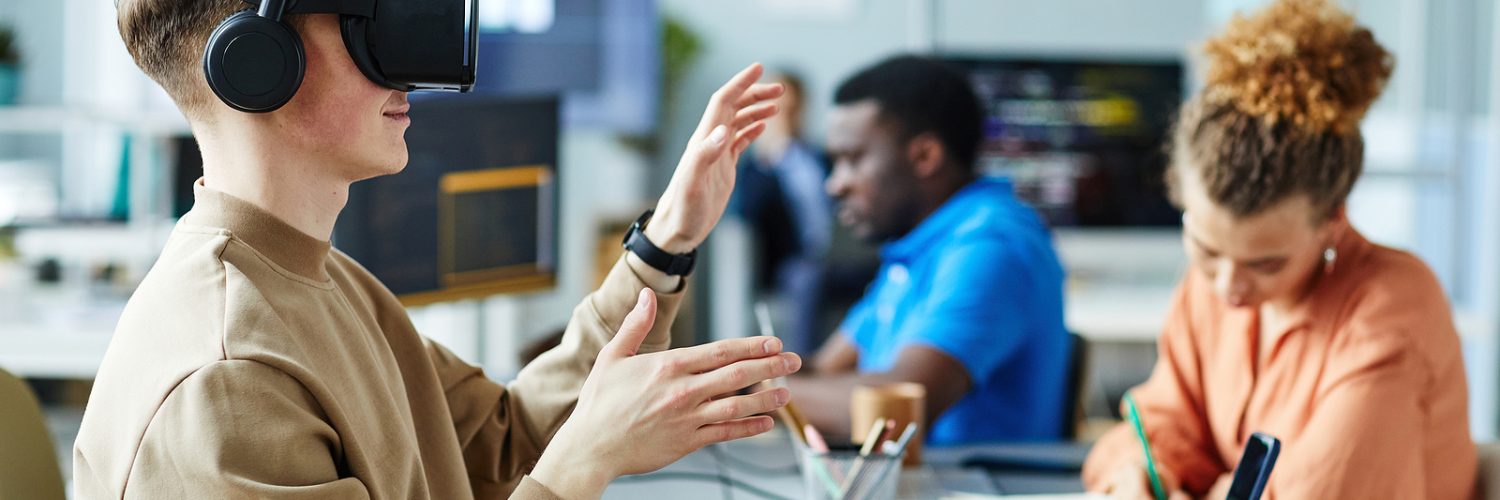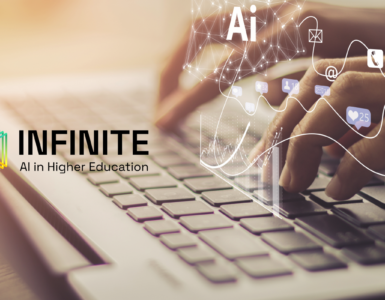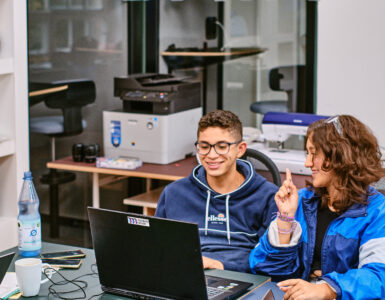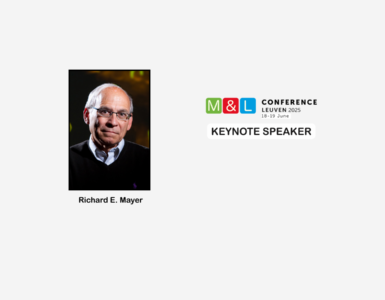By Dr. Murielle Kluge, The University of Newcastle, Australia
Extended reality (XR) technologies will transform the way we learn and teach! Statements like this are often found in articles describing new virtual-reality (VR), augmented reality (AR) or 360-degree video-based teaching applications. In particular VR and AR, which are highly immersive, engaging, and interactive provide the potential to deliver training that is not easily addressed by standard teaching methods.
Motivated by this potential, our research group (Centre for Advanced Training Systems at The University of Newcastle Australia) were keen to explore the use of XR technology in our own local training and teaching context. However, our initial enthusiasm was quickly dampened as it became apparent that there was little information available that described the practical and scalable utility of XR technology within an existing University course context.
There is a growing number of XR tools that are commercially available or have been created in pilot programs. However, there is limited published information available on how these applications are integrated into the classroom and whether they actually work.
Specifically, I struggled to find practical advice and best practise recommendations on how to inform decisions around the selection of suitable content, how to develop or source software or how to practically integrate the technology into the classroom.
As a first step, I reached out and interviewed educators at my own institution, the University of Newcastle, Australia, who had experience using XR technologies. I was interested in their motivation to use the technology, how they navigated the practical barriers and what insights they could provide on how to develop and implement the technology in the future.
As of 2019, only a small number of XR teaching tools (11 in total) had been developed and tested at our university. Whilst all interviewed teaching staff saw great value in their teaching applications, I was surprised to learn that very few of the XR tools were being used consistently within their intended teaching context.
Most applications were developed using a non-standard funding stream that supported the creation of the custom innovative software applications. Whilst this allowed them to create initial prototypes that were tested in a small subset of students, the end-product was often not a finalised application suitable for classroom delivery. Taking their initial prototype from a “minimal viable product” to a functionally- integrated teaching resource required further funding and IT infrastructure support that was not available.
Ongoing support was highlighted as an important factor across multiple areas. In some cases, additional funding was required to purchase or maintain a fleet of VR headsets or tablets. In other cases, the initial testing identified the requirement to make changes to the prototype software. For example, a VR software application did not include clear task instructions requiring students to remove the headset repeatedly to read instructions on paper which resulted in breaking immersion.
In general, ongoing sustainment was one of the main reasons for the XR applications to be discontinued, despite initial enthusiasm. I noted educator frustration at the inability to make minor, but critical, changes to the content after development was complete. For example, one teaching staff member stated: “There is currently no contingency plan to use the tool after pilot testing, due to lack of funding to fix minor technical issues, maintenance and updates”.
I have come to understand the importance of considering and developing a plan BEFORE developing an XR application to ensure both the hard- and software are funded and supported AFTER the prototype build is complete. Specifically, this should include the ability to refine the software content, IT / infrastructure integration and ongoing maintenance.
Whilst the initial costs of content development are high, these costs are often clearly defined. In contrast, the costs and infrastructure requirements for ongoing sustainment are difficult to predict on the outset and are likely to involve institutional level commitment and support, which are often equally difficult to secure.
Despite the lack of ongoing sustainment, all educators I spoke to remained hugely enthusiastic about the benefit of XR technology and the value-add to teaching in general. A consistent point raised was the view that XR teaching applications represent an additional resource, complementing rather than replacing existing practices.
This notion was also repeated by students in an online survey conducted across the University within the same year. Students emphasised that whilst they thought XR was a cool way of learning, they were concerned that the technology may replace face-to face teaching. Of note on this point, the XR applications I came across during my interviews were all relatively short in length (about 10-minutes) and focused on a specific aspect or component within a broader learning goal.
In summary, our work provided useful insights into the use of XR technology at our University, being led by a small group of independent innovators. While their initial experiences were positive, it clearly highlighted the need for broader systems, processes, approaches and infrastructure if the use of XR technology is to be expanded and embedded in higher education.
The findings from this work have since been published in SageOPEN.

Author
Dr. Murielle Kluge, Centre for Advanced Training Systems, The University of Newcastle













